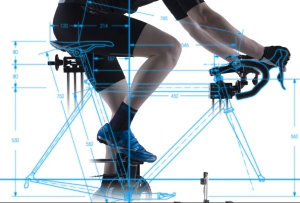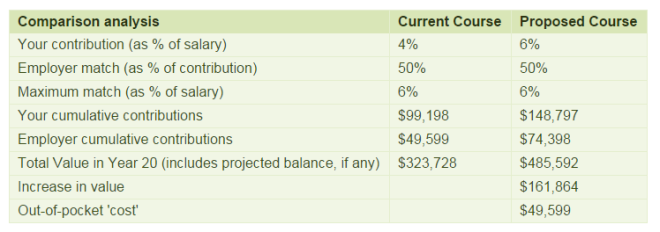Oui, You Can Be Chris Froome
![images[5]](https://centsyouasked.files.wordpress.com/2015/07/images5.jpg) Well, this will likely be my last post with Tour de France references for quite a while. Interesting to note that at least a few of you are not that familiar with Le Tour – as we aficionados call it. It’s true. You say,
Well, this will likely be my last post with Tour de France references for quite a while. Interesting to note that at least a few of you are not that familiar with Le Tour – as we aficionados call it. It’s true. You say,
“Isn’t it just a bunch of skinny men riding their bikes through France?”
Well, just like NASCAR is a bunch of good ol’ boys driving their cars in maddening circles. Wait. Bad example. That’s exactly what NASCAR is. Professional cycling is quite complex, actually. As you may (or may not) know, Great Britain’s Chris Froome won the Le Tour by a margin of 1:12. That’s one minute and 12 seconds.
One minute and 12 seconds over a three-week race that covered roughly 2,100 miles, some of them over the Pyrenees and the Alps mountain ranges, and divided over 21 different stages.
To put that margin of victory into perspective, Froome spent 84 hours, 46 minutes and 14 seconds on the bike – just 1 minute and 12 seconds less than the guy who finished second. Staggering, really. And while it’s only Chris Froome standing atop the winner’s podium in Paris, the victory is due in no small part to the team surrounding him. Not too dissimilar from our personal quests for financial victory. Let’s draw the parallels using some metaphorical language.
The bike:
It’s not about the bike. A bike’s a bike in this metaphor. His may have cost $10K more than yours, but that’s beside the point. Your bike is your job. It gets you from the start to the finish. You may change bikes every now and again, sure. But your goals are accomplished, in no small part, by how well you handle your bike and the caliber of team you surround yourself with. There will always be obstacles, blessings and uncertainties to navigate. You may even crash every now and again. It’s okay. Just get back on the bike…or maybe try a different bike if it suits you? Point being, you must keep pedaling if you’re going to win this race. Coast after the finish line – not before it.
The Team:
Chris Froome didn’t win the tour alone. No one wins the Tour de France alone. It can’t be done. Better yet, it doesn’t have to be done alone. It takes a team. Froome is one of nine riders on Team Sky. And these team members are called “domestiques” (doe mess teeks). Their role is to serve for the benefit of the team leader. It’s not about them, it’s about the team and the team leader. Domestique translates as servant. Together, the team leader and his “servants” create a plan for each stage of the race. With plan in place, and each member’s role clearly defined, they ride. It’s said that over the course of a race, the domestiques can save 20 to 40% of their leader’s energy. Typical roles of the domestique: take the head wind so the leader won’t have to, sit back in the peleton (the peleton is the main group of riders in the race which may number over 150 at times) and protect the leader, get food and beverages for the team, give up a wheel, or even a bike, should the leader have a mechanical issue requiring assistance.
![2948144734_c5ceaefedd[1]](https://centsyouasked.files.wordpress.com/2015/07/2948144734_c5ceaefedd1.jpg) In short, the domestique’s job is to ensure that the leader is afforded his/her best chance of winning the race. Many teams have domestiques that also serve as specialists like sprinters or climbers. Their primary role is to position their leader and team for victory as best as possible in the stages where mountains and long flat lands are present. These men and women are selfless specialists all working for the leader and for the sake of the team. They might well say to their leader, “You keep riding, we’ll execute the plan.”
In short, the domestique’s job is to ensure that the leader is afforded his/her best chance of winning the race. Many teams have domestiques that also serve as specialists like sprinters or climbers. Their primary role is to position their leader and team for victory as best as possible in the stages where mountains and long flat lands are present. These men and women are selfless specialists all working for the leader and for the sake of the team. They might well say to their leader, “You keep riding, we’ll execute the plan.”
And here’s where the rubber hits the road.
You: The Client
You are Chris Froome. You’re the team leader. At the end of the day, the domestiques are working for you, to accomplish the goals and objectives set forth in your plan. A plan that you helped create with the team you assembled.
This is about you.
And your team has been specifically chosen because of its unique ability and desire to serve you. You’ll do your share of the pedaling, for sure. But you won’t have to do all the work. And it’s your team’s role to help you make the most of the work you put in on your bike.
Me: The Financial Advisor
I am your domestique. Together we create the plan, work the plan and modify the plan to accommodate your race. We’ll have multiple domestiques to assist us with the highs of the mountains and the lows of the valleys. We are here to serve. Providing you with financial and estate planning, with investment allocation counsel and with tax planning and charitable gifting strategies. That’s not an all-inclusive list; we’re just approaching the starting line, folks. We’ll put a plan together and we’ll take it one mile at a time with the finish line in sight.
I am your domestique. I am here to serve.
And I also like metaphors.


